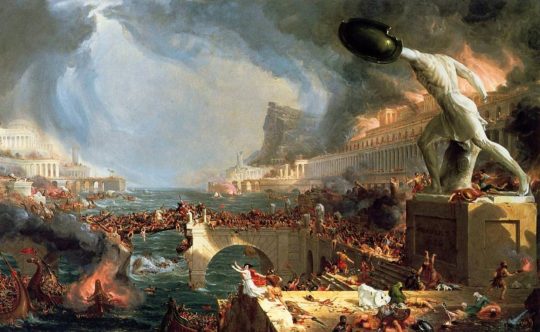#eb 283
Text
John Egbert, Rose Lalonde
Act 2, page 283
EB: aw man, where'd it go?
TT: I can't find it anywhere in the house.
TT: No time to worry about it.
TT: The next thing we should do is get your server copy of the game from the car.
TT: You need to connect to my client, so I can repeat your steps and presumably join you, wherever you are.
TT: We should do this quickly, before my house burns down.
EB: what, there's a fire??
TT: There will be soon.
EB: oh jeez!
EB: so move this thing already!
TT: It looks like it requires a lot of grist to move.
TT: I don't have enough to relocate the door, either.
EB: how much do you have?
TT: Zero.
EB: oh.
EB: hmm.
EB: i thought about jumping to the car from the ledge earlier but that sounds really dangerous!
TT: I have a better idea.
TT: Meet me upstairs.
0 notes
Text
Bedienungsanleitung husqvarna 345 movies
BEDIENUNGSANLEITUNG HUSQVARNA 345 MOVIES >> DOWNLOAD LINK
vk.cc/c7jKeU
BEDIENUNGSANLEITUNG HUSQVARNA 345 MOVIES >> READ ONLINE
bit.do/fSmfG
345 172 260 283 Beachten Sie bitte die Bedienungsanleitung des Fahrzeuges. Hinweise auf der Batterie, in der Gebrauchsanweisung und in der. HRD, HUATIAN, HUSQVARNA, HYOSUNG, ITALJET, ITTECO, IVA, JACK-FOX, JINAN QINGQI Movie XL 125 4T AC. People 125 4T AC Beverly 400ie E3 M345M 4T LC. Husqvarna PW 345C Unsere Hochdruckreiniger bieten die Qualität und die intuitive Bedienung, How to film Pressure Washer PW 360 1m40s 16.9 DE Befolgen Sie diese einfache Anleitung, um das Grasmesser Ihrer Husqvarna-Motorsense zu wechseln. EBE 92 94 FD089 FD075 Husqvarna CR 125 Cross 125 2H EBE 2000 ‐ FD138 FD165 FD187 FD145 Kymco Movie 125 S5 e4*0110* 2001 ‐ FD187 Kymco Movie S/G5 125 V1345. 73. 365. 74. 375. 77. 412. Geschwindigkeit in km/h. Geschwindigkeitssymbol bis 12 Zoll. Geschwindigkeitssymbol über 12 Zoll. Introduction This workshop manual is mainly intended for Husqvarna model 40, Controlar el funcionamiento de este moviendo el arco de adelante a atras
https://lobehutumili.tumblr.com/post/691818104641191936/berlan-bwig180-bedienungsanleitung, https://bigejimarofo.tumblr.com/post/691818028094177280/polaris-sportsman-800-bedienungsanleitung-deutsch, https://qaxunorofomu.tumblr.com/post/691818081918550016/sony-icf-c717pj-uhrenradio-bedienungsanleitung, https://lobehutumili.tumblr.com/post/691818104641191936/berlan-bwig180-bedienungsanleitung, https://bigejimarofo.tumblr.com/post/691818028094177280/polaris-sportsman-800-bedienungsanleitung-deutsch.
0 notes
Photo









+++
100 notes
·
View notes
Text










Can someone please explain to me how this actual baby can have an adult child?!
EB283
A New Adult in the Neal Household
#ear biscuits#eb 283#link neal#link avec specs#dark blues#mythical merch#silver wings#he's so pretty#and so baby#this adorable manchild#🥰🥰🥰#my edit
77 notes
·
View notes
Text
The Burning of the Library of Alexandria
Once the largest library in the ancient world, and containing works by the greatest thinkers and writers of antiquity, including Homer, Plato, Socrates and many more, the Library of Alexandria, northern Egypt, is popularly believed to have been destroyed in a huge fire around 2000 years ago and its volumous works lost.

Since its destruction this wonder of the ancient world has haunted the imagination of poets, historians, travellers and scholars, who have lamented the tragic loss of knowledge and literature. Today, the idea of a 'Universal Library' situated in a city celebrated as the centre of learning in the ancient world, has attained mythical status.
The mystery has been perpetuated by the fact that no architectural remains or archaeological finds that can definitely be attributed to the ancient Library have ever been recovered, surprising for such a supposedly renowned and imposing structure. This lack of physical proof has even persuaded some to wonder if the fabulous Library actually existed at all in the form popularly imagined.
The loss of the ancient world's single greatest archive of knowledge, the Library of Alexandria, has been lamented for ages. But how and why it was lost is still a mystery. The mystery exists not for lack of suspects but from an excess of them.

Alexandria was founded in Egypt by Alexander the Great. His successor as Pharaoh, Ptolemy I Soter, founded the Museum (also called Museum of Alexandria, Greek Mouseion, “Seat of the Muses”) or Royal Library of Alexandria in 283 BC. The Museum was a shrine of the Muses modeled after the Lyceum of Aristotle in Athens. The Museum was a place of study which included lecture areas, gardens, a zoo, and shrines for each of the nine muses as well as the Library itself. It has been estimated that at one time the Library of Alexandria held over half a million documents from Assyria, Greece, Persia, Egypt, India and many other nations. Over 100 scholars lived at the Museum full time to perform research, write, lecture or translate and copy documents. The library was so large it actually had another branch or "daughter" library at the Temple of Serapis.

The first person blamed for the destruction of the Library is none other than Julius Caesar himself. In 48 BC, Caesar was pursuing Pompey into Egypt when he was suddenly cut off by an Egyptian fleet at Alexandria. Greatly outnumbered and in enemy territory, Caesar ordered the ships in the harbor to be set on fire. The fire spread and destroyed the Egyptian fleet. Unfortunately, it also burned down part of the city - the area where the great Library stood. Caesar wrote of starting the fire in the harbor but neglected to mention the burning of the Library. Such an omission proves little since he was not in the habit of including unflattering facts while writing his own history. But Caesar was not without public detractors. If he was solely to blame for the disappearance of the Library it is very likely significant documentation on the affair would exist today.

The second story of the Library's destruction is more popular, thanks primarily to Edward Gibbon's "The Decline and Fall of the Roman Empire". But the story is also a tad more complex. Theophilus was Patriarch of Alexandria from 385 to 412 AD. During his reign the Temple of Serapis was converted into a Christian Church (probably around 391 AD) and it is likely that many documents were destroyed then. The Temple of Serapis was estimated to hold about ten percent of the overall Library of Alexandria's holdings.
After his death, his nephew Cyril became Patriarch. Shortly after that, riots broke out when Hierax, a Christian monk, was publicly killed by order of Orestes the city Prefect. Orestes was said to be under the influence of Hypatia, a female philosopher and daughter of the "last member of the Library of Alexandria". Although it should be noted that some count Hypatia herself as the last Head Librarian.
Alexandria had long been known for its violent and volatile politics. Christians, Jews and Pagans all lived together in the city. One ancient writer claimed that there was no people who loved a fight more than those of Alexandria. Immediately after the death of Hierax a group of Jews who had helped instigate his killing lured more Christians into the street at night by proclaiming that the Church was on fire. When the Christians rushed out the largely Jewish mob slew many of them.
After this there was mass havoc as Christians retaliated against both the Jews and the Pagans - one of which was Hypatia. The story varies slightly depending upon who tells it but she was taken by the Christians, dragged through the streets and murdered.

Some regard the death of Hypatia as the final destruction of the Library. Others blame Theophilus for destroying the last of the scrolls when he razed the Temple of Serapis prior to making it a Christian church. Still others have confused both incidents and blamed Theophilus for simultaneously murdering Hypatia and destroying the Library though it is obvious Theophilus died sometime prior to Hypatia.

The final individual to get blamed for the destruction is the Moslem Caliph Omar. In 640 AD the Moslems took the city of Alexandria. Upon learning of "a great library containing all the knowledge of the world" the conquering general supposedly asked Caliph Omar for instructions. The Caliph has been quoted as saying of the Library's holdings, "they will either contradict the Koran, in which case they are heresy, or they will agree with it, so they are superfluous."
So, allegedly, all the texts were destroyed by using them as tinder for the bathhouses of the city. Even then it was said to have taken six months to burn all the documents. But these details, from the Caliph's quote to the incredulous six months it supposedly took to burn all the books, weren't written down until 300 years after the fact. These facts condemning Omar were written by Bishop Gregory Bar Hebræus, a Christian who spent a great deal of time writing about Moslem atrocities without much historical documentation.

So who did burn the Library of Alexandria? Unfortunately most of the writers from Plutarch (who apparently blamed Caesar) to Edward Gibbons (a staunch atheist or deist who liked very much to blame Christians and blamed Theophilus) to Bishop Gregory (who was particularly anti-Moslem, blamed Omar) all had an axe to grind and consequently must be seen as biased.
Probably everyone mentioned above had some hand in destroying some part of the Library's holdings. The collection may have ebbed and flowed as some documents were destroyed and others were added. For instance, Mark Antony was supposed to have given Cleopatra over 200,000 scrolls for the Library long after Julius Caesar is accused of burning it.

It is also quite likely that even if the Museum was destroyed with the main library the outlying "daughter" library at the Temple of Serapis continued on. Many writers seem to equate the Library of Alexandria with the Library of Serapis although technically they were in two different parts of the city.
The real tragedy of course is not the uncertainty of knowing who to blame for the Library's destruction but that so much of ancient history, literature and learning was lost forever.
#library of alexandria#alexandria#history#ancient#classical#antiquity#books#reading#literature#civilisation#destruction#roman#egypt#alexander the great
206 notes
·
View notes
Text
A rising tide of marine disease? How parasites respond to a warming world
https://sciencespies.com/nature/a-rising-tide-of-marine-disease-how-parasites-respond-to-a-warming-world/
A rising tide of marine disease? How parasites respond to a warming world
Warming events are increasing in magnitude and severity, threatening many ecosystems worldwide. As the global temperatures continue to climb, it also raises uncertainties as to the relationship, prevalence, and spread of parasites and disease.
A recent study from the University of Washington explores the ways parasitism will respond to climate change, providing researchers new insights into disease transmission. The paper was published May 18 in Trends in Ecology and Evolution.
The review builds upon previous research by adding nearly two decades of new evidence to build a framework showing the parasite-host relationship under climate oscillations. Traditionally, climate-related research is done over long timescales, however this unique approach examines how increasingly frequent “pulse warming” events alter parasite transmission.
“Much of what is known about how organisms and ecosystems can respond to climate change has focused on gradual warming,” said lead author Danielle Claar, a postdoctoral researcher at the UW School of Aquatic and Fishery Sciences. “Climate change causes not only gradual warming over time, but also increases the frequency and magnitude of extreme events, like heat waves.”
Claar explained that both gradual warming and pulse warming can and have influenced ecosystems, but do so in different ways. Organisms may be able to adapt and keep pace with the gradual warming, but an acute pulse event can have sudden and profound impacts.
The 2013-2015 “blob” is one such extreme heat pulse event which has been linked to a massive die-off of sea stars along the Pacific coast of the U.S. and Canada. Many species of sea stars, including the large sunflower sea star, were decimated by a sudden epidemic of wasting disease. Five years later, populations in the region are still struggling to recover. The abnormally warm waters associated with the blob are thought to have favored the spread of the sea star-associated densovirus, the suggested cause of the disease.
The authors compare the prevalence of these marine diseases to a rising tide, an ebbing tide, or a tsunami. Disease transmission can rise or ebb in concert with gradual warming or a series of pulse warming events. However, a severe pulse warming event could result in a tsunami, “initiating either a deluge or drought of disease,” as was observed with sea stars along the Pacific Northwest.
However, not all pulse heat events will cause the same response. What may benefit a particular parasite or host in one system can be detrimental in another. Warming can alter a parasite’s life cycle, limit the range of suitable host species, or even impair the host’s immune response. Some flatworms which target wildlife and humans cannot survive as long in warmer waters, decreasing their window for infecting a host. Another recent UW study found that parasites commonly found in sushi are on the rise with their numbers increasing 283-fold in the past 40 years, though the relationship between heat pulse events and their abundance is not yet clear.
“The relationships between hosts, parasites, and their corresponding communities are complex and depend on many factors, making outcomes difficult to predict,” said Claar, who recommends researchers make predictions on a case-by-case basis for their individual systems.
The authors conclude that rather than a straightforward tidal prediction, they would expect pulse warming to cause “choppy seas with the occasional rogue wave.”
“It is important that we are able to understand and predict how parasitism and disease might respond to climate change, so we can prepare for, and mitigate, potential impacts to human and wildlife health,” said Claar.
Story Source:
Materials provided by University of Washington. Original written by Dan DiNicola. Note: Content may be edited for style and length.
#Nature
1 note
·
View note
Text
1. Angkatan 2000an, Daun yang jatuh tak pernah membenci angin - Tere Liye (250)
2. Fiction, the book thief - markus zusak (560)
3. Non fiction, night, dawn, day - elie wiesel (trilogy) (300)
4. Pujangga lama, hamzah fansuri (syair perahu, syair unggas (syair ruh)) + Gurindam dua belas - Raja Ali Haji
5. Fiction, dracula - bram stoker (488)
6. Non fiction, educated - tara westover (334)
7. Angkatan Reformasi
8. Fiction, the giving tree - shel silverstein (64)
9. Nonfiction, eat, pray, love - elizabeth gilbert
10. Melayu lama
11. Fiction, the picture of dorian gray - oscar wilde (272)
12. Nonfiction, steve jobs - walter isaacson (627)
13. Angkatan 80
14. Fiction memoirs of a geisha - arthur golden (503)
15. Nonfiction, the glass castle - jeannette walls (288)
16. Angkatan balai pustaka
17. Fiction, alice's adventure in wonderland/through the looking glass (2 books) - lewis carroll (239)
18. Nonfiction, into the wild - jon krakauer (207)
19. Angkatan 66
20. Fiction, the perks of being a wallflower (213)
21. Nonfiction, bossypants - tina fey (283)
22. Angkatan pujangga baru
23. Fiction, romeo and juliet - william shakespeare (281)
24. Nonfiction tuesday with morrie - mitch albom (199)
25. Angkatan 50
26. Fiction, charlotte's web - EB White (184)
27. Nonfiction, freakonomics - steven d levitt (268)
28. Angkatan 45
29. Fiction, the help - kathryn stockett (464)
30. Nonfiction, how to win friends and influence people - dale carnegie (288)
1 note
·
View note
Text
0 notes
Text
1년 미로
원본링크:https://booktable.kr/2020/01/14/1%eb%85%84-%eb%af%b8%eb%a1%9c/
머리가 좋아지는 미로찾기 시리즈
1년 미로

제 목: 1년미로
저 자: 세베 마사유키
펴 낸 곳: 아르고나인미디어그룹
판 형: 283*275mm
면 수: 32쪽
발 행 일: 2019년 10월 15일
정 가: 12,000원
분 야: 유아
ISBN: 8809332972502
12월부터 크리스마스, 설날, 졸업식, 입학식, 어린이날, 여름 방학, 추석, 할로윈 등 월별 이야기를 담은 ��로찾기
책 소개
1 년의 계절을 미로그림책
1 년의 월별 행사를 재미있고 화려한 그림에 숨겨 있는 그림 속 이야기를 찾아가는 즐거움을 주는…
View On WordPress
0 notes
Text
Chevrolet Suburban Timeline: Hits and Highlights From America’s Longest-Lived Nameplate
The 1935 Chevrolet Suburban launched a sub-segment that eventually attracted competitors like the Dodge Town Wagon, Jeep Utility Wagon, and International Travelall. Those trucks are long gone now leaving Chevy’s Suburban to duke it out with the Ford Expedition (and soon the Jeep Grand Wagoneer). While we wait to see how the new 12th-generation Suburban stacks up against the Ford Expedition, let’s review the highlights reel of the Suburban’s 84-plus-year history.
1933 – The pre-Suburban: Chevrolet half-ton truck gets a long station-wagon body made of wood and built specifically for National Guard/Civilian Conservation Corps use. Power comes from a 207-cu-in (3.4L) I-6 good for 56 hp.
1935 – Chevrolet Carryall Suburban is introduced as the first truck-based all-steel station wagon based on the EB Master series half-ton truck chassis. The original was offered with eight-passenger seating (in a three-two-three-person row arrangement) accessed via just two front side doors and a tailgate/lift-window in back, though a barn-door rear option was soon offered. Output of the same 207 engine jumps to 60 hp.
1937 – GMC Carryall Suburban: GMC slaps its name on the half-ton (T-14A in GMC parlance) steel wagon, but uses its own engine, which this year is a 230-cu-in 85-hp flat-head I-6
1941 – Second Generation: The Chevrolet/GMC Carryall Suburban gets a 2.5-inch wheelbase stretch (to 116.0 inches), retains its door and seating configurations. Each brand gets a more powerful engine, with Chevy’s 216-cu-in (3.5L) making 90 hp and GMC’s 228-cu-in (3.7L) good for 93 hp. Wartime production continues for military use.
1947 – Third Generation: Based on new “Advance Design” pickup styling, this Suburban would eventually inspire the 2006-2011 HHR retro wagon. Both brands retain their 116-inch wheelbase, engines, manual transmissions, door, and seating configurations to start with.
1953 – Hydra-Matic Offered! A four-speed automatic transmission arrives at GMC in 1953, and a year later at Chevrolet.
1955 – Fourth Generation: New smooth-sided “Task Force” styling featuring a wrap-around windshield arrives in March 1955. Both brands get optional V-8 power, with Chevy fitting its new 265-cu-in 154-hp Small Block and GMC adapting a Pontiac-based 287-cu-in 155-hp V-8. Six cylinders are still standard, (235 cu-in/119 hp at Chevy, 248 cu-in/125-hp at GMC). Wheelbase shrinks 2 inches (to 114). GMC applies the Suburban name to its smooth-sided pickup (analogous to the Chevy Cameo) until 1958, with fewer than 300 built each year. (The Suburban name is never again applied to a pickup.)
1956 – 4-Wheel Drive: If you wanted 4-wheel drive in earlier years, you had to get dealer-installed conversion kits from companies like Northwestern Auto Parts Company (NAPCO). Their live-axle/leaf-spring kit had cost $995, required just three hours to install, and could be removed and reinstalled in a new truck. GMC began installing the NAPCO kits in house in 1956, Chevy in 1957.
1960 – Fifth Generation: Factory-engineered 4WD arrives this year, as does independent front suspension for rear-drive models, using torsion bars. C/K nomenclature is introduced, signifying 2WD (C) or 4WD (K) models. Each brand offered a range of six- and eight-cylinder engines (including a gigantic 305-cu-in 150-hp V-6 at GMC) paired with manual or automatic transmissions.
1964 – Chevrolet Veraneio This model featuring unique body styling and two doors on the passenger side is sold in Brazil. There’s still only one door on the driver side.
1967 – Sixth Generation: Chevrolet Suburban/GMC Carryall 6th-gen finally gets a rear side door on the passenger side only. V-8 engine offerings proliferate, with Small Blocks offered in 283-, 307-, 327-, 350-cu-in sizes and a big block offered in 396- and 402-cu-in sizes.
1969 – Chevrolet Blazer/1970 GMC Jimmy These short-wheelbase two-door variants with removable rear roof sections are introduced with standard 4WD (a rear-drive option is quickly added).
1970 – Panel-side production ends. This body style had been offered in C-10 (half-ton) and C-20 (3/4-ton) variants, with the latter being the only heavy-duty Suburban available.
1971 – Front disc brakes! This modern convenience becomes standard at last.
1973 – Seventh Generation: Suburban finally gets four side doors along with a 12-inch wheelbase stretch and remains in production for 19 years, ranking as the longest-lived generation. Also new: optional front and rear A/C, an Eaton locking rear differential, a luggage rack, along with diesel power, first the (largely terrible) GM 350 V-8, and later a 6.2-liter from Detroit Diesel. Second-gen Blazer/Jimmy introduced. For the first time a ¾-ton passenger version is offered (this option disappears again after 2013).
1981 – Shift-on-the-fly 4WD Automatic-locking hubs are added to 4WD to ease 4WD engagement and overall convenience of the option.
1987 – Carburetors eliminated Electronic fuel-injection becomes standard.
1990 – Rear Anti-lock Brakes
1992 – Eighth Generation: GMT400 architecture underpins the latest Chevy Suburban and renamed GMC Yukon XL plus their new siblings, the Chevy Tahoe and GMC Yukon. Torsion-bar independent front suspension arrives for 4WD models, the Detroit Diesel option grows to 6.5 liters. This generation eventually gets a driver airbag, Onstar, PassLock security, and full-time AutoTrac AWD.
1998 – Holden & Cadillac Right-hand drive Holden Suburbans built in Silao, Mexico, are exported to Australia and New Zealand. Cadillac launches its heavily tinseled Escalade variant.
2000 – Ninth Generation: New GMT800 architecture saw the retirement of the long-serving 350- and 454-cu-in V-8s as well as the diesel, with the gas-fired Vortec 5300 and 6000 taking their place. The spare moved from the cargo area to beneath the truck and four-wheel discs were added.
2001 – Chevrolet Avalanche/Cadillac Escalade EXT These pickup trucks based on Suburban architecture are introduced, featuring a “midgate” that allowed long items to extend in over the folded rear seats, while a rigid weather-tight tonneau over the bed kept everything dry and secure. They last through 2013.
2002 – Cadillac Escalade ESV A Suburban-length model joins the Cadillac lineup.
2005 – Mil-spec: AM General begins production of Light Service Support Vehicle military versions of the Tahoe and Suburban (and Silverado 1500/2500). GM started off building these in-house back in 2001.
2007 – 10th Generation: GMT900 architecture brings a more rakish windshield and smoother aerodynamics. The 5.3- and 6.0-liter engines carry over, joined by a 6.2L Vortec V-8 in Yukon XL Denali editions. No sheetmetal or lighting elements are shared with the pickup trucks any longer.
2010 – 75th Anniversary Edition This fully loaded model based on the LTZ trim level features a cashmere leather interior and white diamond tri-coat paint—the supply of which limited production to 2,570 units.
2015 – 11th Generation: Spanking new K2XX architecture brings longer, lower, wider (by 2.0, 2.4, and 1.4 inches respectively), increased use of aluminum (hood and liftgate), and new, more efficient EcoTec3 direct-injected 5.3- and 6.2-liter V-8 engines.
2016 – One-Ton Class 3: Joining the 2500HD Suburban that returned to the lineup in 2015 was a Class 3 (10,000-plus GVWR) 4WD variant available only to commercial fleet and government buyers.
2019 – 12th Generation: The T1-generation 2021 Chevrolet Suburban arrives with a longer wheelbase, new tech, an available 3.0L turbodiesel I-6, and, for the first time, an independent rear suspension. Along with its Tahoe sibling, the new Suburban also gets updated 5.4L and 6.2L V-8 gas engines. All come mated to a 10-speed automatic transmission.
The post Chevrolet Suburban Timeline: Hits and Highlights From America’s Longest-Lived Nameplate appeared first on MotorTrend.
via RSSMix.com Mix ID 8134279 https://ift.tt/2Mq6ZS1
0 notes
Photo

+++
88 notes
·
View notes
Text
Chevrolet Suburban Timeline: Hits and Highlights From America’s Longest-Lived Nameplate
The 1935 Chevrolet Suburban launched a sub-segment that eventually attracted competitors like the Dodge Town Wagon, Jeep Utility Wagon, and International Travelall. Those trucks are long gone now leaving Chevy’s Suburban to duke it out with the Ford Expedition (and soon the Jeep Grand Wagoneer). While we wait to see how the new 12th-generation Suburban stacks up against the Ford Expedition, let’s review the highlights reel of the Suburban’s 84-plus-year history.
1933 – The pre-Suburban: Chevrolet half-ton truck gets a long station-wagon body made of wood and built specifically for National Guard/Civilian Conservation Corps use. Power comes from a 207-cu-in (3.4L) I-6 good for 56 hp.
1935 – Chevrolet Carryall Suburban is introduced as the first truck-based all-steel station wagon based on the EB Master series half-ton truck chassis. The original was offered with eight-passenger seating (in a three-two-three-person row arrangement) accessed via just two front side doors and a tailgate/lift-window in back, though a barn-door rear option was soon offered. Output of the same 207 engine jumps to 60 hp.
1937 – GMC Carryall Suburban: GMC slaps its name on the half-ton (T-14A in GMC parlance) steel wagon, but uses its own engine, which this year is a 230-cu-in 85-hp flat-head I-6
1941 – Second Generation: The Chevrolet/GMC Carryall Suburban gets a 2.5-inch wheelbase stretch (to 116.0 inches), retains its door and seating configurations. Each brand gets a more powerful engine, with Chevy’s 216-cu-in (3.5L) making 90 hp and GMC’s 228-cu-in (3.7L) good for 93 hp. Wartime production continues for military use.
1947 – Third Generation: Based on new “Advance Design” pickup styling, this Suburban would eventually inspire the 2006-2011 HHR retro wagon. Both brands retain their 116-inch wheelbase, engines, manual transmissions, door, and seating configurations to start with.
1953 – Hydra-Matic Offered! A four-speed automatic transmission arrives at GMC in 1953, and a year later at Chevrolet.
1955 – Fourth Generation: New smooth-sided “Task Force” styling featuring a wrap-around windshield arrives in March 1955. Both brands get optional V-8 power, with Chevy fitting its new 265-cu-in 154-hp Small Block and GMC adapting a Pontiac-based 287-cu-in 155-hp V-8. Six cylinders are still standard, (235 cu-in/119 hp at Chevy, 248 cu-in/125-hp at GMC). Wheelbase shrinks 2 inches (to 114). GMC applies the Suburban name to its smooth-sided pickup (analogous to the Chevy Cameo) until 1958, with fewer than 300 built each year. (The Suburban name is never again applied to a pickup.)
1956 – 4-Wheel Drive: If you wanted 4-wheel drive in earlier years, you had to get dealer-installed conversion kits from companies like Northwestern Auto Parts Company (NAPCO). Their live-axle/leaf-spring kit had cost $995, required just three hours to install, and could be removed and reinstalled in a new truck. GMC began installing the NAPCO kits in house in 1956, Chevy in 1957.
1960 – Fifth Generation: Factory-engineered 4WD arrives this year, as does independent front suspension for rear-drive models, using torsion bars. C/K nomenclature is introduced, signifying 2WD (C) or 4WD (K) models. Each brand offered a range of six- and eight-cylinder engines (including a gigantic 305-cu-in 150-hp V-6 at GMC) paired with manual or automatic transmissions.
1964 – Chevrolet Veraneio This model featuring unique body styling and two doors on the passenger side is sold in Brazil. There’s still only one door on the driver side.
1967 – Sixth Generation: Chevrolet Suburban/GMC Carryall 6th-gen finally gets a rear side door on the passenger side only. V-8 engine offerings proliferate, with Small Blocks offered in 283-, 307-, 327-, 350-cu-in sizes and a big block offered in 396- and 402-cu-in sizes.
1969 – Chevrolet Blazer/1970 GMC Jimmy These short-wheelbase two-door variants with removable rear roof sections are introduced with standard 4WD (a rear-drive option is quickly added).
1970 – Panel-side production ends. This body style had been offered in C-10 (half-ton) and C-20 (3/4-ton) variants, with the latter being the only heavy-duty Suburban available.
1971 – Front disc brakes! This modern convenience becomes standard at last.
1973 – Seventh Generation: Suburban finally gets four side doors along with a 12-inch wheelbase stretch and remains in production for 19 years, ranking as the longest-lived generation. Also new: optional front and rear A/C, an Eaton locking rear differential, a luggage rack, along with diesel power, first the (largely terrible) GM 350 V-8, and later a 6.2-liter from Detroit Diesel. Second-gen Blazer/Jimmy introduced. For the first time a ¾-ton passenger version is offered (this option disappears again after 2013).
1981 – Shift-on-the-fly 4WD Automatic-locking hubs are added to 4WD to ease 4WD engagement and overall convenience of the option.
1987 – Carburetors eliminated Electronic fuel-injection becomes standard.
1990 – Rear Anti-lock Brakes
1992 – Eighth Generation: GMT400 architecture underpins the latest Chevy Suburban and renamed GMC Yukon XL plus their new siblings, the Chevy Tahoe and GMC Yukon. Torsion-bar independent front suspension arrives for 4WD models, the Detroit Diesel option grows to 6.5 liters. This generation eventually gets a driver airbag, Onstar, PassLock security, and full-time AutoTrac AWD.
1998 – Holden & Cadillac Right-hand drive Holden Suburbans built in Silao, Mexico, are exported to Australia and New Zealand. Cadillac launches its heavily tinseled Escalade variant.
2000 – Ninth Generation: New GMT800 architecture saw the retirement of the long-serving 350- and 454-cu-in V-8s as well as the diesel, with the gas-fired Vortec 5300 and 6000 taking their place. The spare moved from the cargo area to beneath the truck and four-wheel discs were added.
2001 – Chevrolet Avalanche/Cadillac Escalade EXT These pickup trucks based on Suburban architecture are introduced, featuring a “midgate” that allowed long items to extend in over the folded rear seats, while a rigid weather-tight tonneau over the bed kept everything dry and secure. They last through 2013.
2002 – Cadillac Escalade ESV A Suburban-length model joins the Cadillac lineup.
2005 – Mil-spec: AM General begins production of Light Service Support Vehicle military versions of the Tahoe and Suburban (and Silverado 1500/2500). GM started off building these in-house back in 2001.
2007 – 10th Generation: GMT900 architecture brings a more rakish windshield and smoother aerodynamics. The 5.3- and 6.0-liter engines carry over, joined by a 6.2L Vortec V-8 in Yukon XL Denali editions. No sheetmetal or lighting elements are shared with the pickup trucks any longer.
2010 – 75th Anniversary Edition This fully loaded model based on the LTZ trim level features a cashmere leather interior and white diamond tri-coat paint—the supply of which limited production to 2,570 units.
2015 – 11th Generation: Spanking new K2XX architecture brings longer, lower, wider (by 2.0, 2.4, and 1.4 inches respectively), increased use of aluminum (hood and liftgate), and new, more efficient EcoTec3 direct-injected 5.3- and 6.2-liter V-8 engines.
2016 – One-Ton Class 3: Joining the 2500HD Suburban that returned to the lineup in 2015 was a Class 3 (10,000-plus GVWR) 4WD variant available only to commercial fleet and government buyers.
2019 – 12th Generation: The T1-generation 2021 Chevrolet Suburban arrives with a longer wheelbase, new tech, an available 3.0L turbodiesel I-6, and, for the first time, an independent rear suspension. Along with its Tahoe sibling, the new Suburban also gets updated 5.4L and 6.2L V-8 gas engines. All come mated to a 10-speed automatic transmission.
The post Chevrolet Suburban Timeline: Hits and Highlights From America’s Longest-Lived Nameplate appeared first on MotorTrend.
https://www.motortrend.com/news/chevrolet-suburban-history-timeline-photo-gallery/ visto antes em https://www.motortrend.com
0 notes
Photo

New Post has been published on http://blackmon.dothome.co.kr/%ec%a0%84%ea%b5%ad24%ec%8b%9c%ec%b6%9c%ec%9e%a5%ec%95%88%eb%a7%88%ed%9b%84%ea%b8%b0-07073339649-%ec%b9%b4%ed%86%a1-vv23%ec%a6%90%ea%b1%b0%ec%9a%b4%eb%8b%ac%eb%a6%bc%ec%b6%9c%ec%9e%a5%ec%95%88-283/
전국24시#출장안마후기-070=7333=9649-[카톡-VV23]즐거운달림#출장안마포항[070-7333-9649]행복한만남이벤트[카톡VV23]#출장안마추천#출장안마강추[구글검색-늑대와여배우]#출장안마후기
#출장마사지후기,#출장마사지추천즐거운달림#출장안마대구[070-7333-9649]행복한만남이벤트[카톡VV23]#출장안마추천#출장안마강추[구글검색-늑대와여배우]#출장안마후기
0 notes
Photo

New Post has been published on http://blackmon.dothome.co.kr/%ec%a0%84%ea%b5%ad24%ec%8b%9c%ec%b6%9c%ec%9e%a5%ec%95%88%eb%a7%88%ed%9b%84%ea%b8%b0-07073339649-%ec%b9%b4%ed%86%a1-vv23%ec%a6%90%ea%b1%b0%ec%9a%b4%eb%8b%ac%eb%a6%bc%ec%b6%9c%ec%9e%a5%ec%95%88-283/
전국24시#출장안마후기-070=7333=9649-[카톡-VV23]즐거운달림#출장안마포항[070-7333-9649]행복한만남이벤트[카톡VV23]#출장안마추천#��장안마강추[구글검색-늑대와여배우]#출장안마후기
#출장마사지후기,#출장마사지추천즐거운달림#출장안마대구[070-7333-9649]행복한만남이벤트[카톡VV23]#출장안마추천#출장안마강추[구글검색-늑대와여배우]#출장안마후기
0 notes
